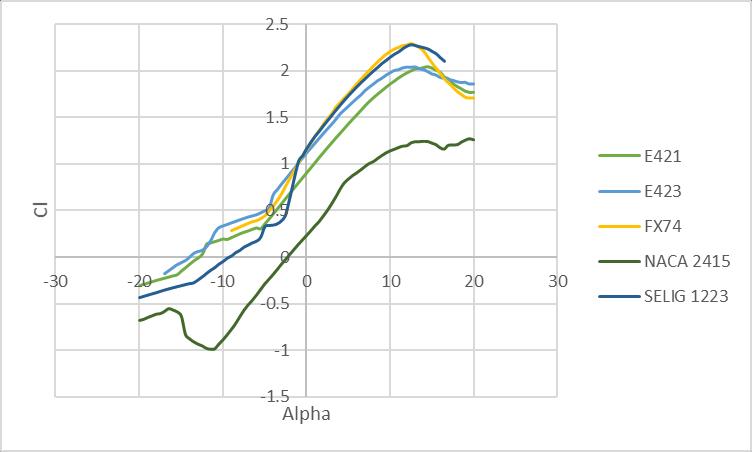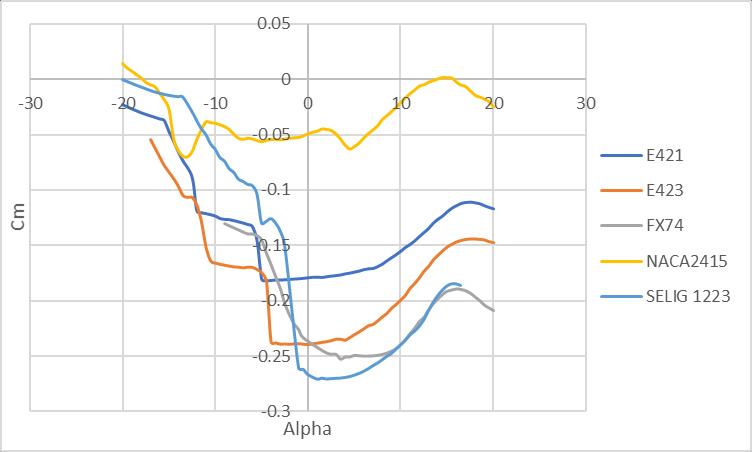
2 minute read
MATERIAL SELECTION
Volume: 08 Issue: 05 | May 2021 www.irjet.net p-ISSN: 2395-0072
considered as a rigid structure and the variation in the results are observed and the results are compared.
Advertisement
1.1 Methodology
1. Designing the wing of the desired dimension on CATIA V5. 2. Importing the model into ANSYS to carry out analysis. 3. Perform Static Analysis to determine aerodynamic characteristics.
4. Perform Static Structural and Modal Frequency Analysis to determine the stress concentration, deformation and the natural frequency of the wing structure 5. To carry out Fluid Structure Analysis on the wing structure using ANSYS R18 and by applying different materials.. 6. Comparison of the results obtained from static structural analysis to that obtained by fluid structure interaction for different materials.
2. SELECTION OF AIRFOIL
Eppler 421, Eppler 423, FX 74, NACA 2415 and Selig 1223 met the required criteria. The airfoil polars are plotted using XFLR5 at a Reynolds Number of 250000 which corresponds to a velocity of 15m/s. Upon comparison between the five airfoils Eppler 423 and Selig 1223 were shortlisted since they had the best aerodynamic characteristics. In order to select between the airfoils Eppler 423 and Selig 1223 a pugh matrix is employed where fabrication, Clmax, Cl/Cdare the parameters chosen for the selection.
The airfoils are rated on a scale of 1 to 5 based on their compatibility to the requirements, where 5 indicates the highest rating and 1 indicates the lowest rating respectively. Fabrication and Cl/Cd are considered to be the most important parameters hence they are given a rating of 5 followed by Clmax which is rated at 4. Taking the ratings into considerations, Eppler 423 and Selig 1223 are rated after carefully evaluating the polars and their ease of fabrication. It is also noticed that it is easier to fabricate Eppler 423 due to its relatively thick trailing edge when compared to Selig 1223. The Pugh matrix is shown in the Table 1 below: Table -1: Airfoil Selection Pugh Matrix
Eppler 423 is the finalised airfoil since it has a higher total score of 62 compared to that of Selig 1223 which has a total score of 56. Eppler 423 is given the highest rating for fabrication since it has a thicker trailing edge in comparison to S1223. It also has the highest lift to drag ratio. Hence E423 is chosen. The aerodynamic characteristics of E423 obtained from XFLR5 airfoil polars is specified in Table 2 below:
Parameters Weight
Airfoil Eppler 423 Selig 1223 Fabrication 5 5 4 Cl max 4 3 4 Cl/Cd 5 5 4 Total - 62 56 Table-2: Eppler 423 Characteristics
Clmax Clmin Cl0 Cdmin Stall Angle 2.0035 0.0419 1.1905 0.0192 12.25o
Fig-1 : Cl Vs Alpha

Fig-2 : Cm Vs Alpha

Fig-3 : Cl Vs Cd



